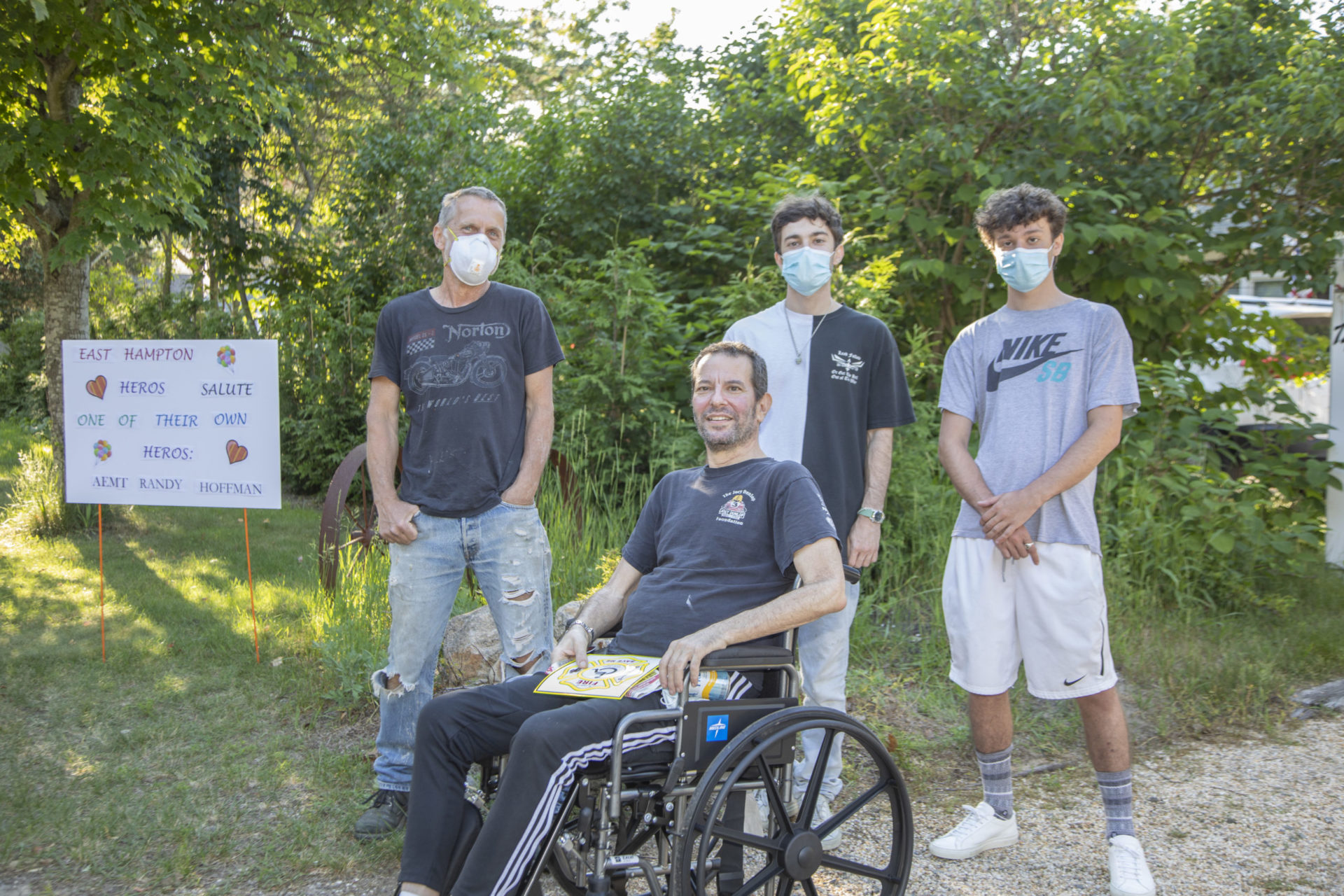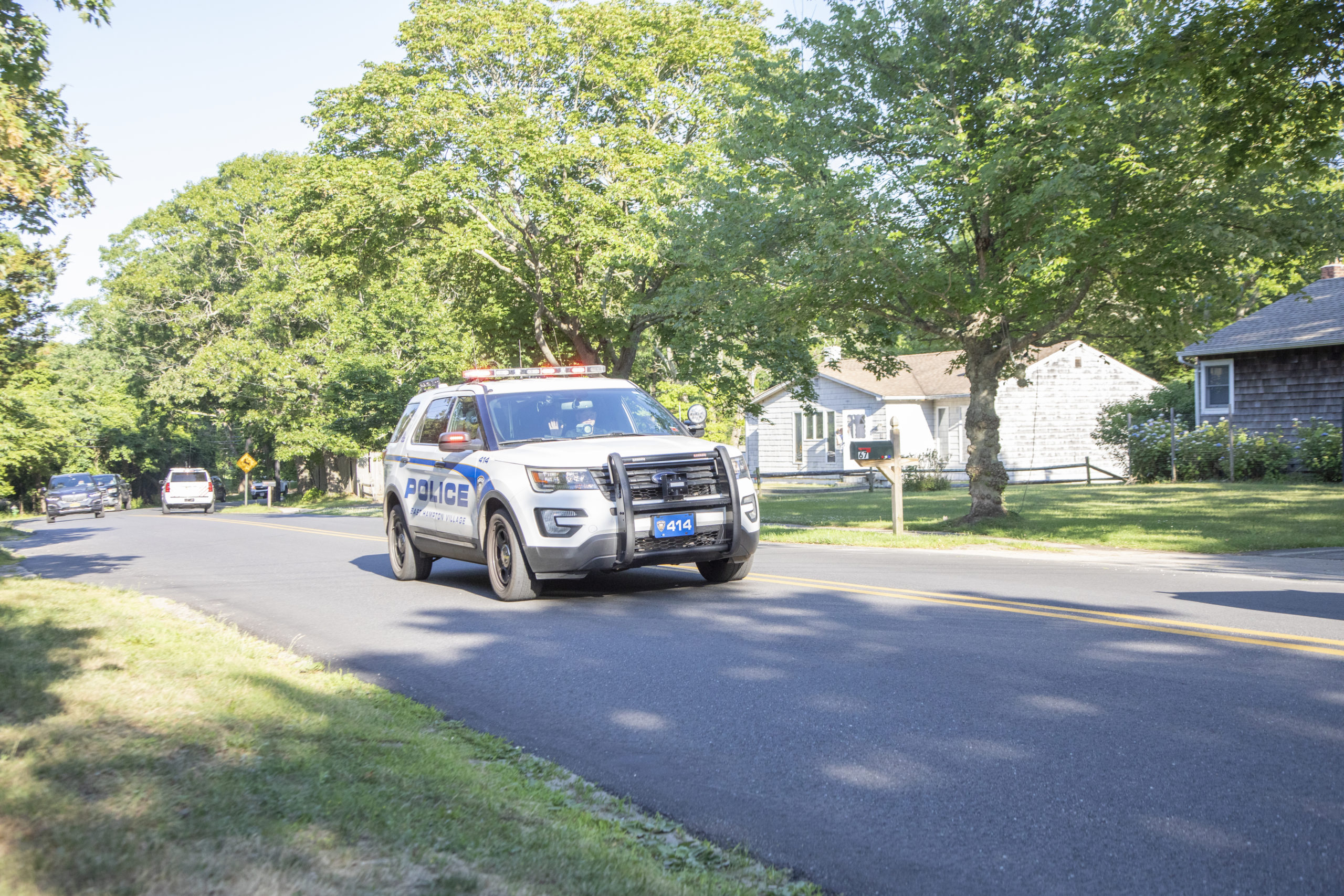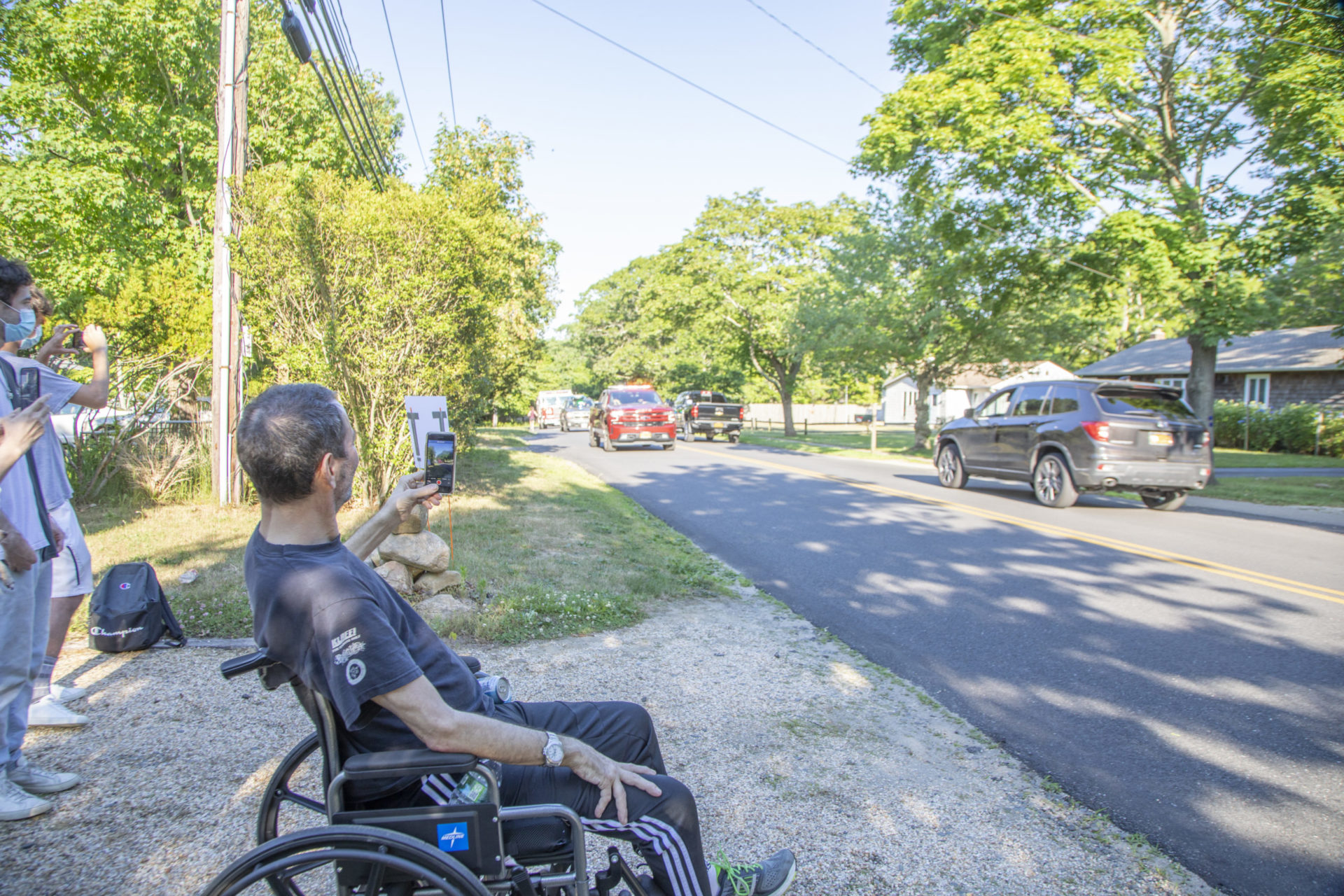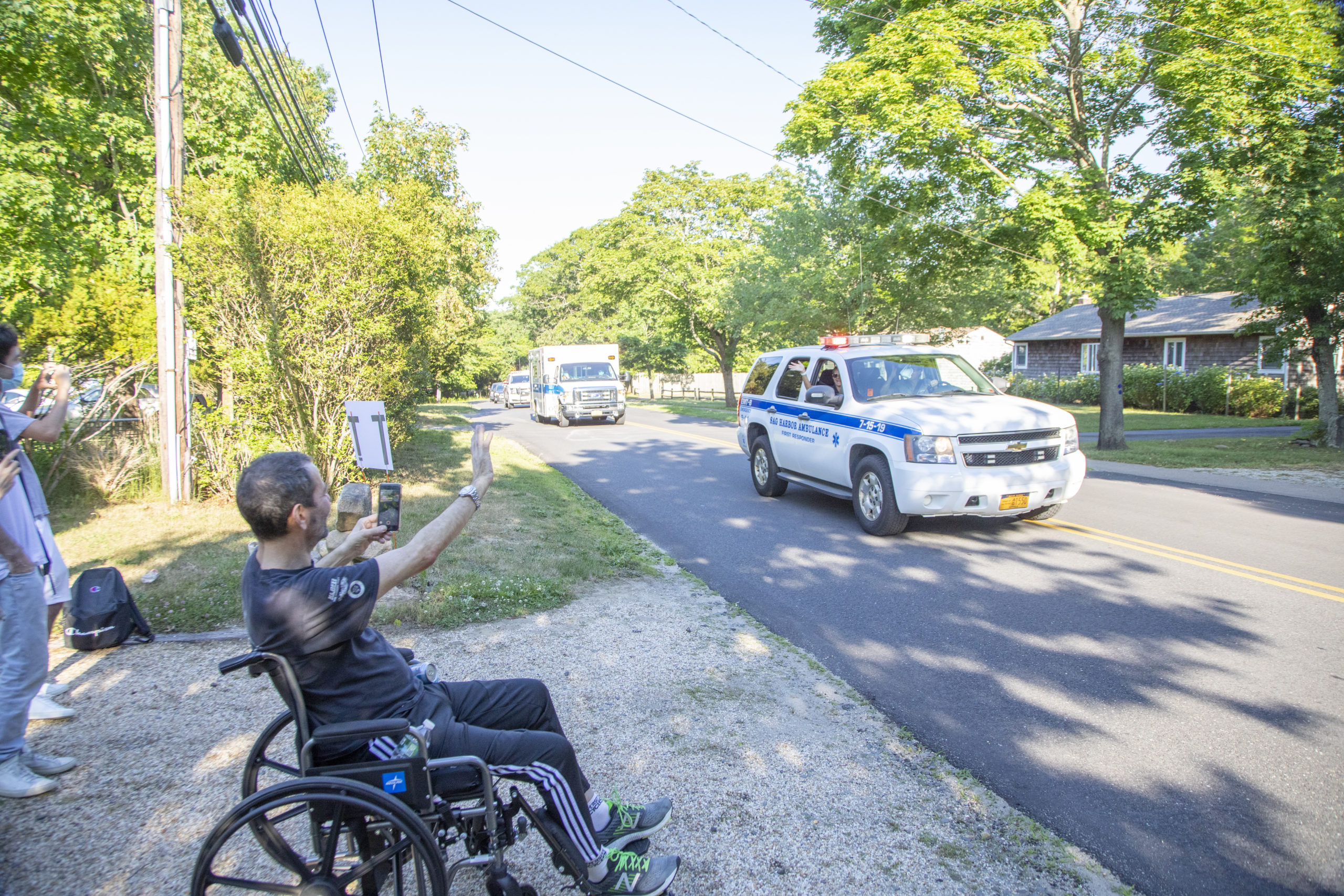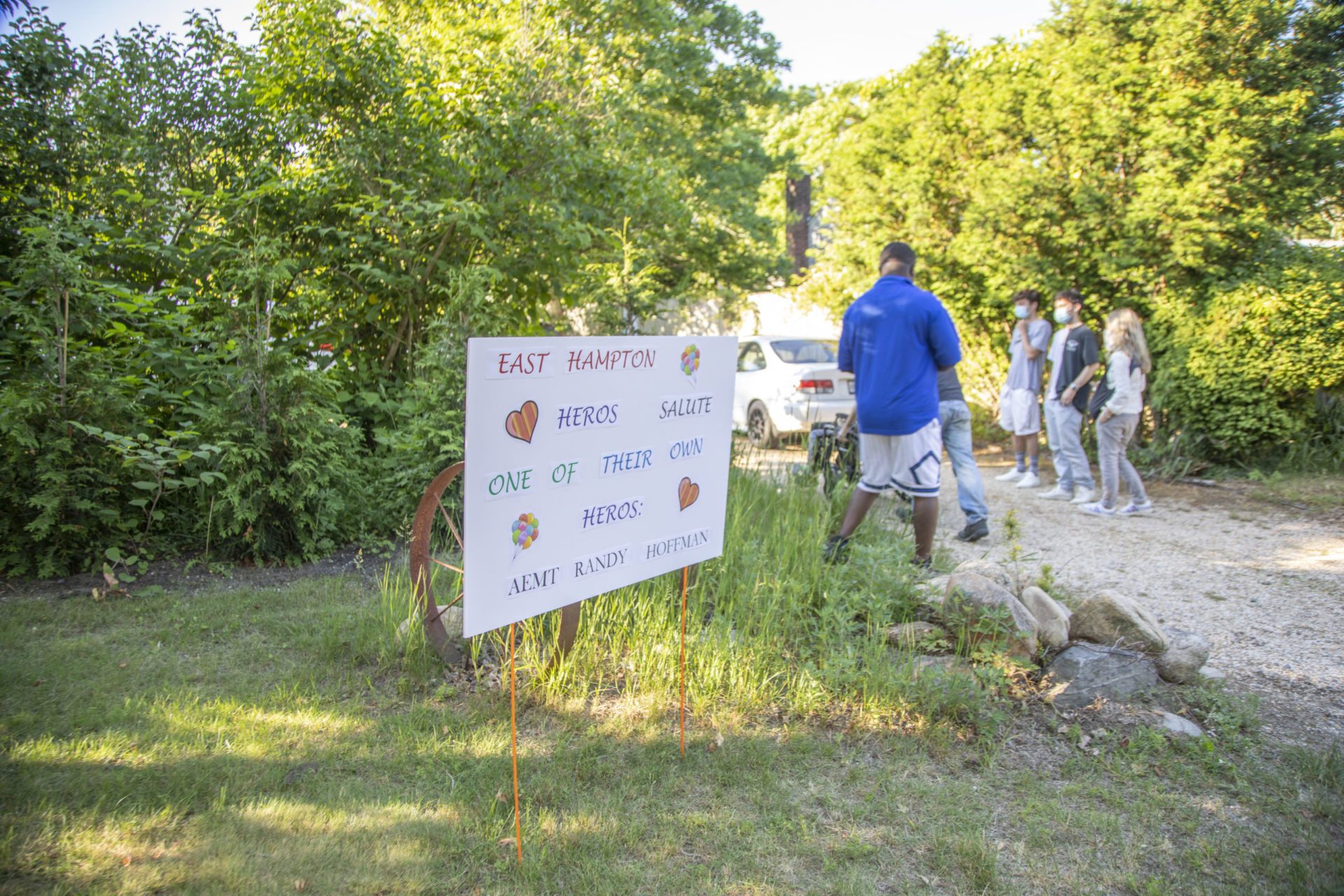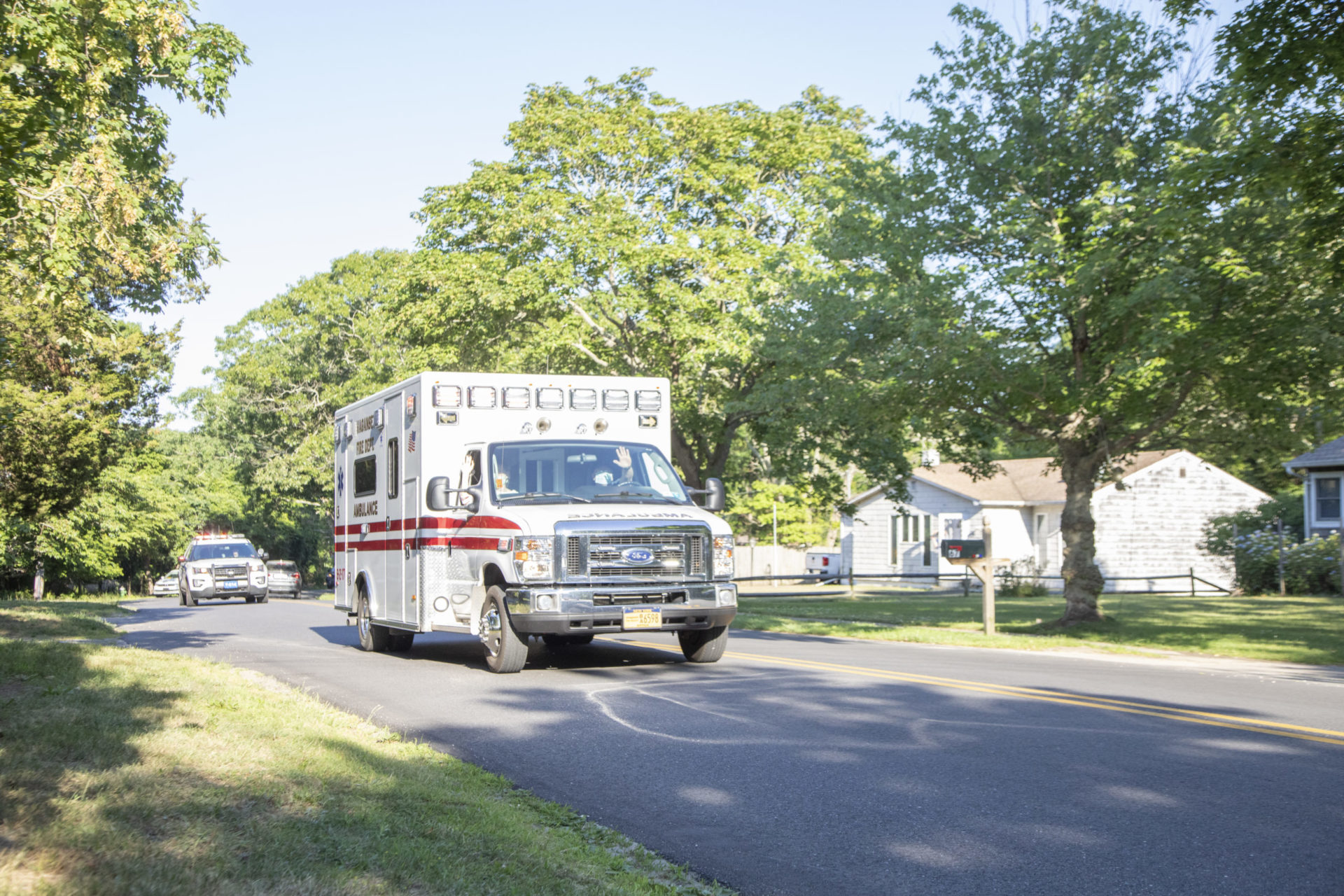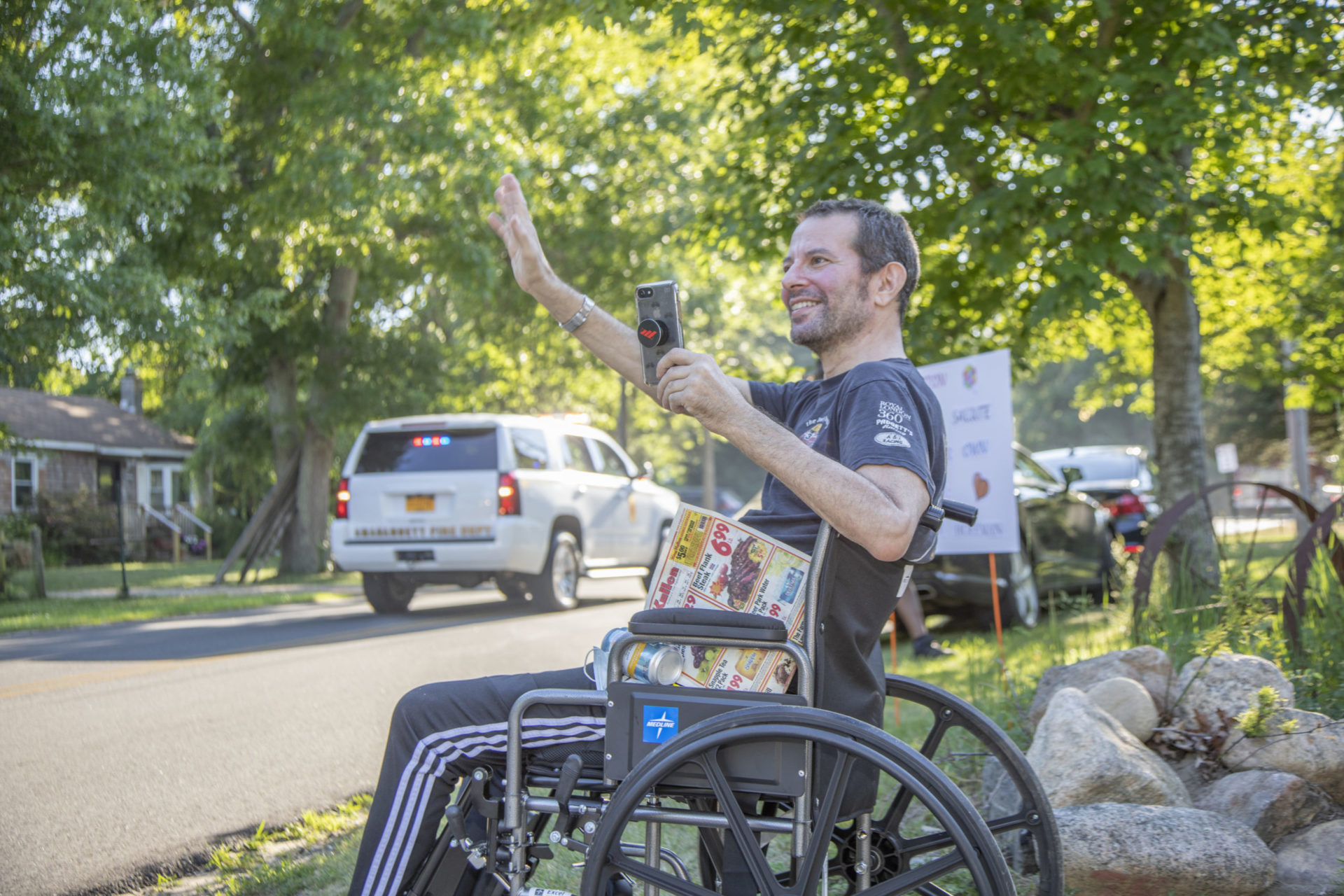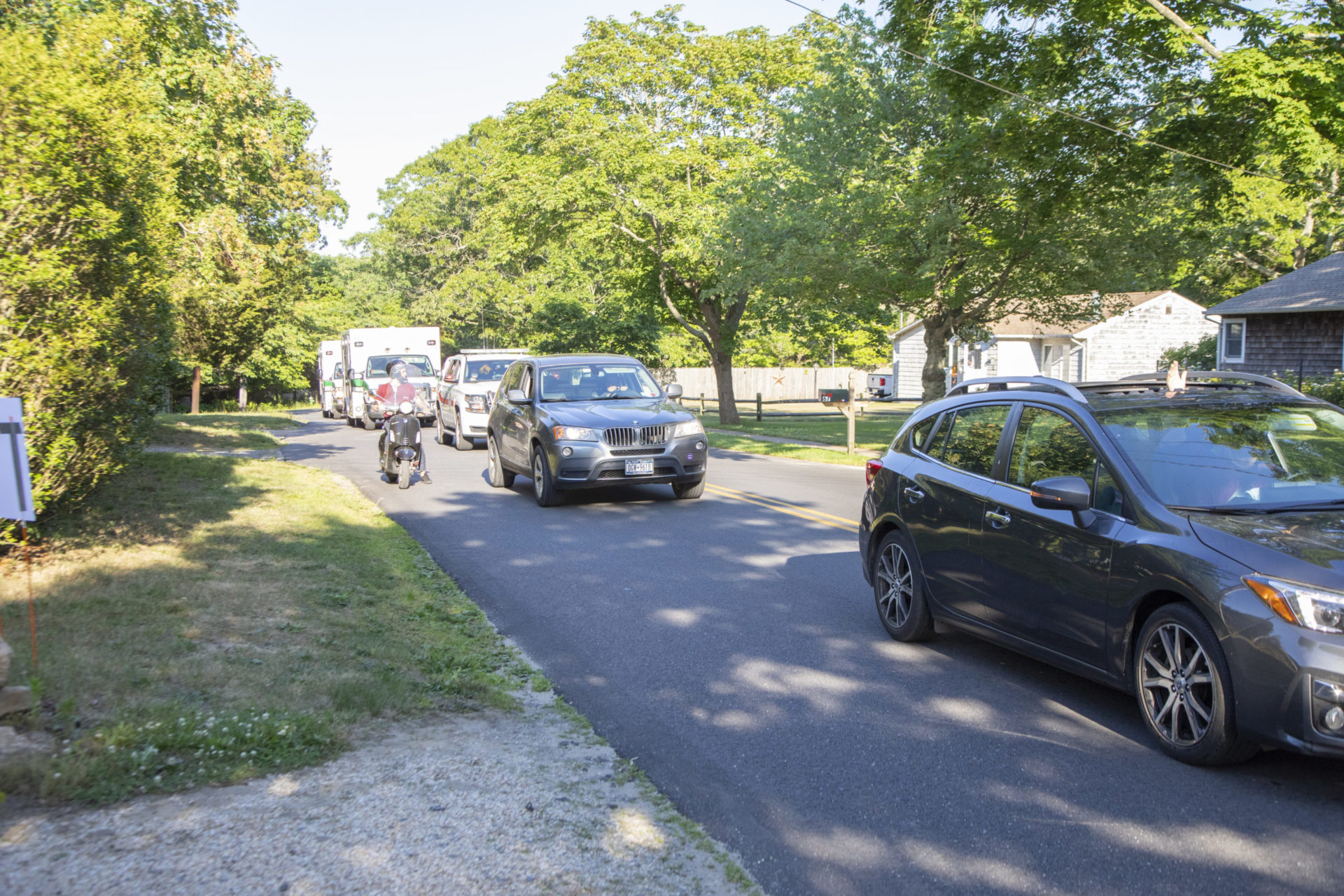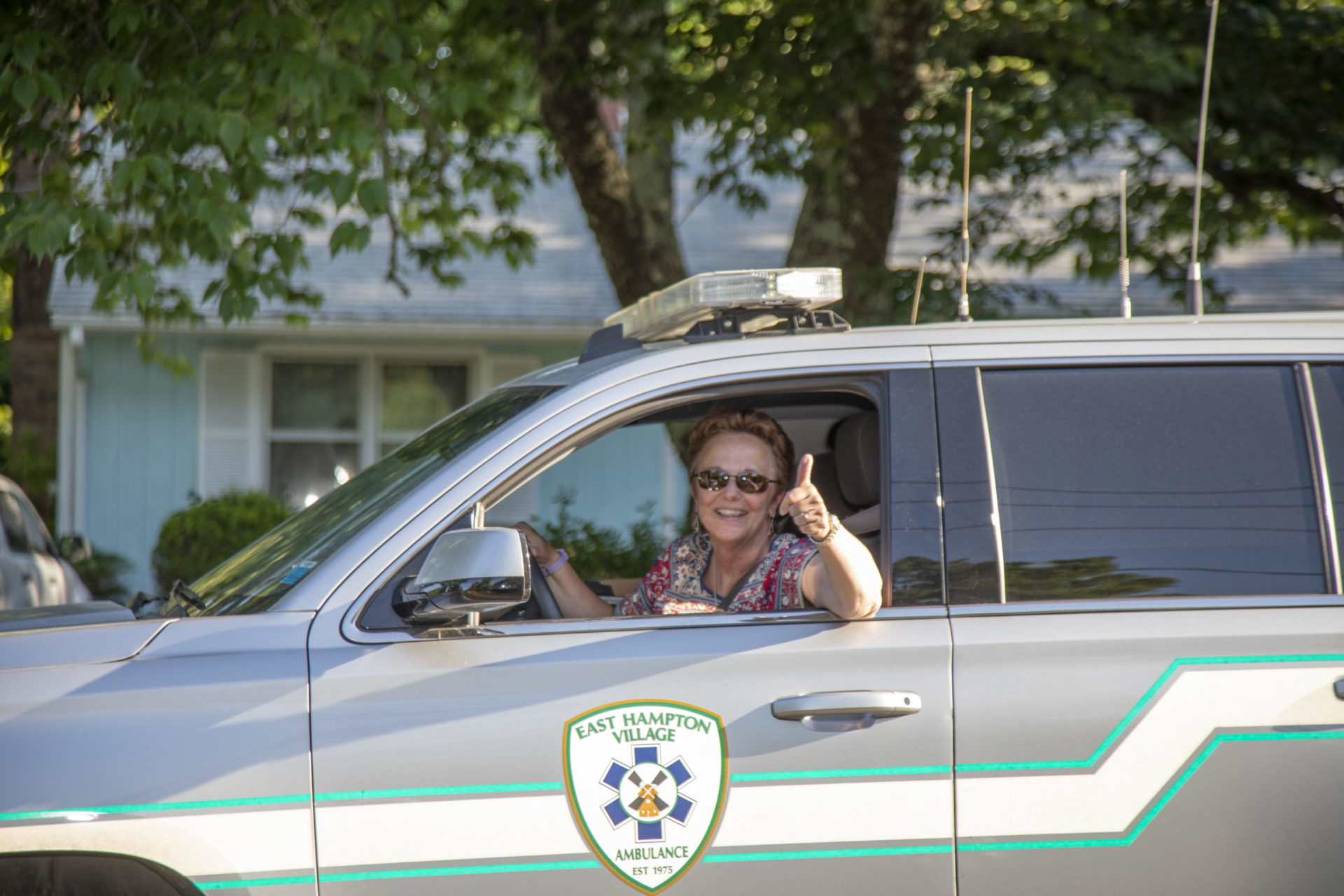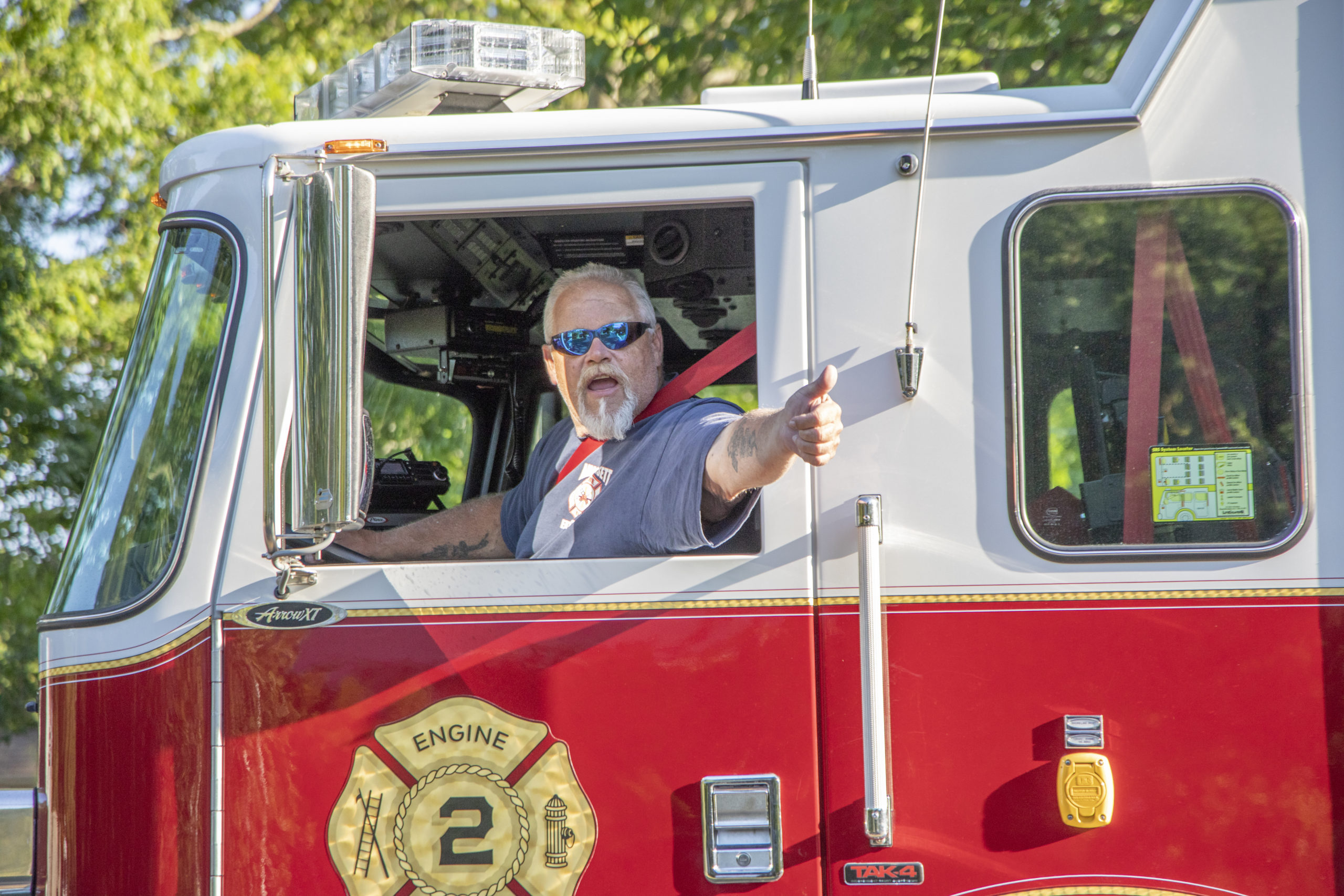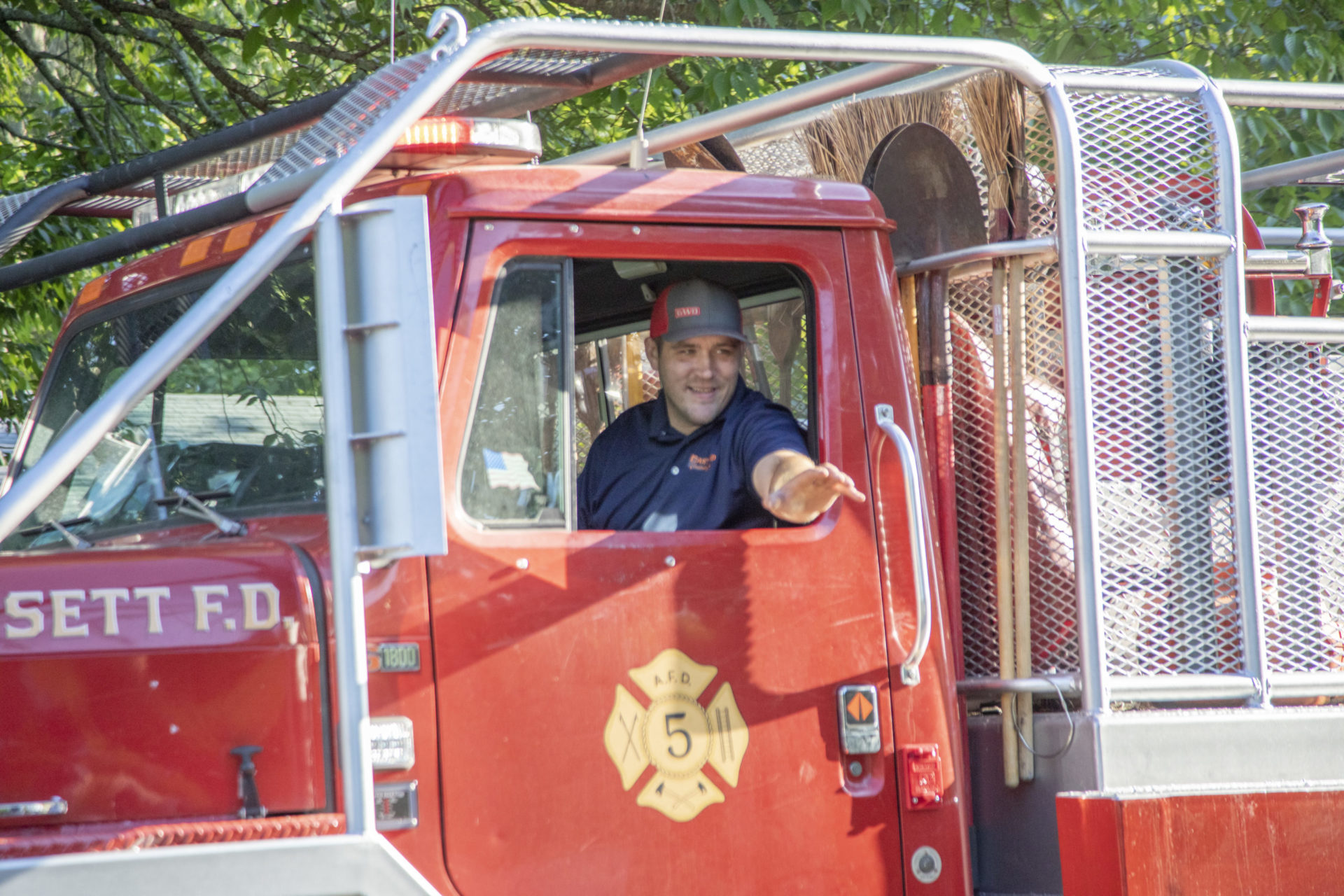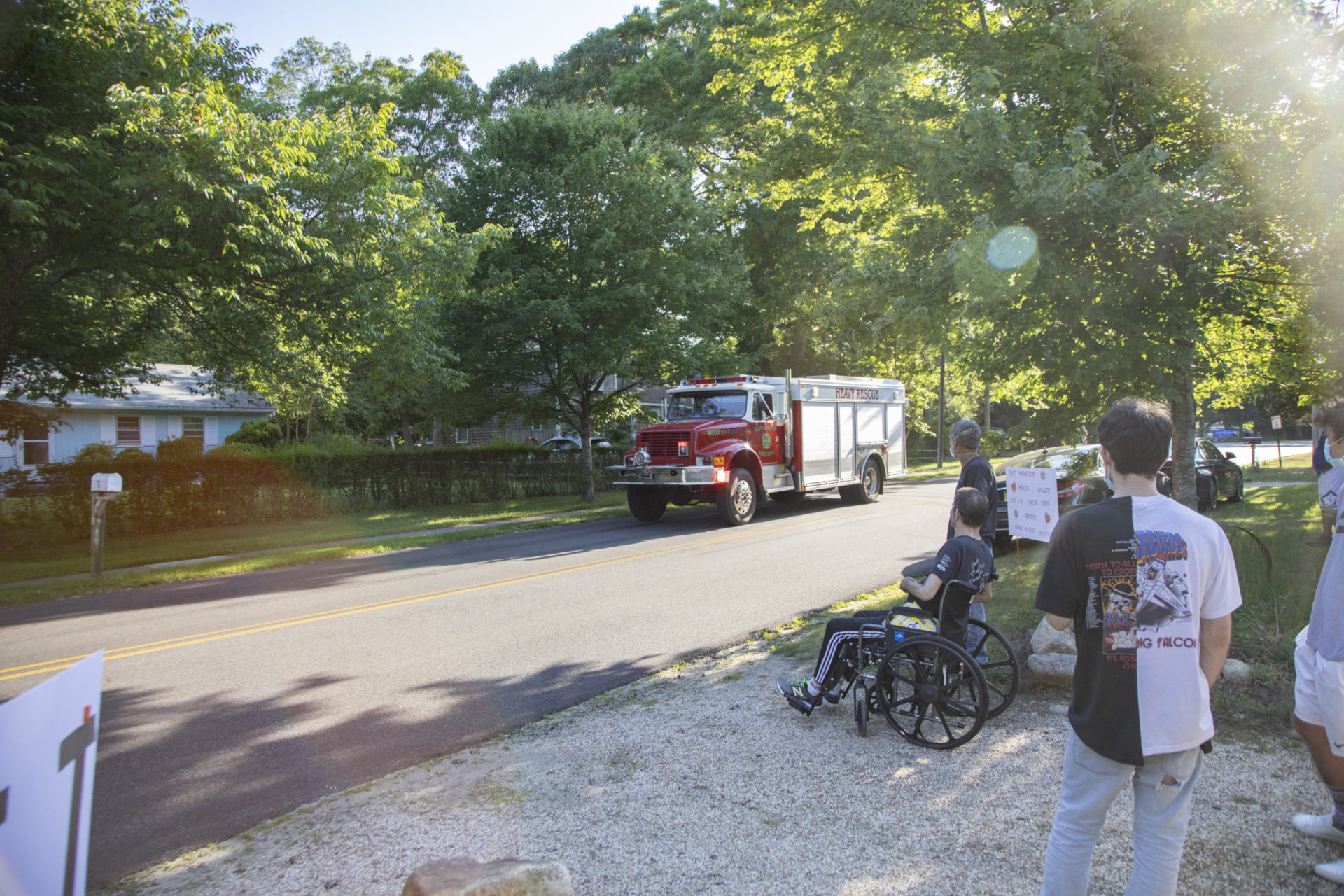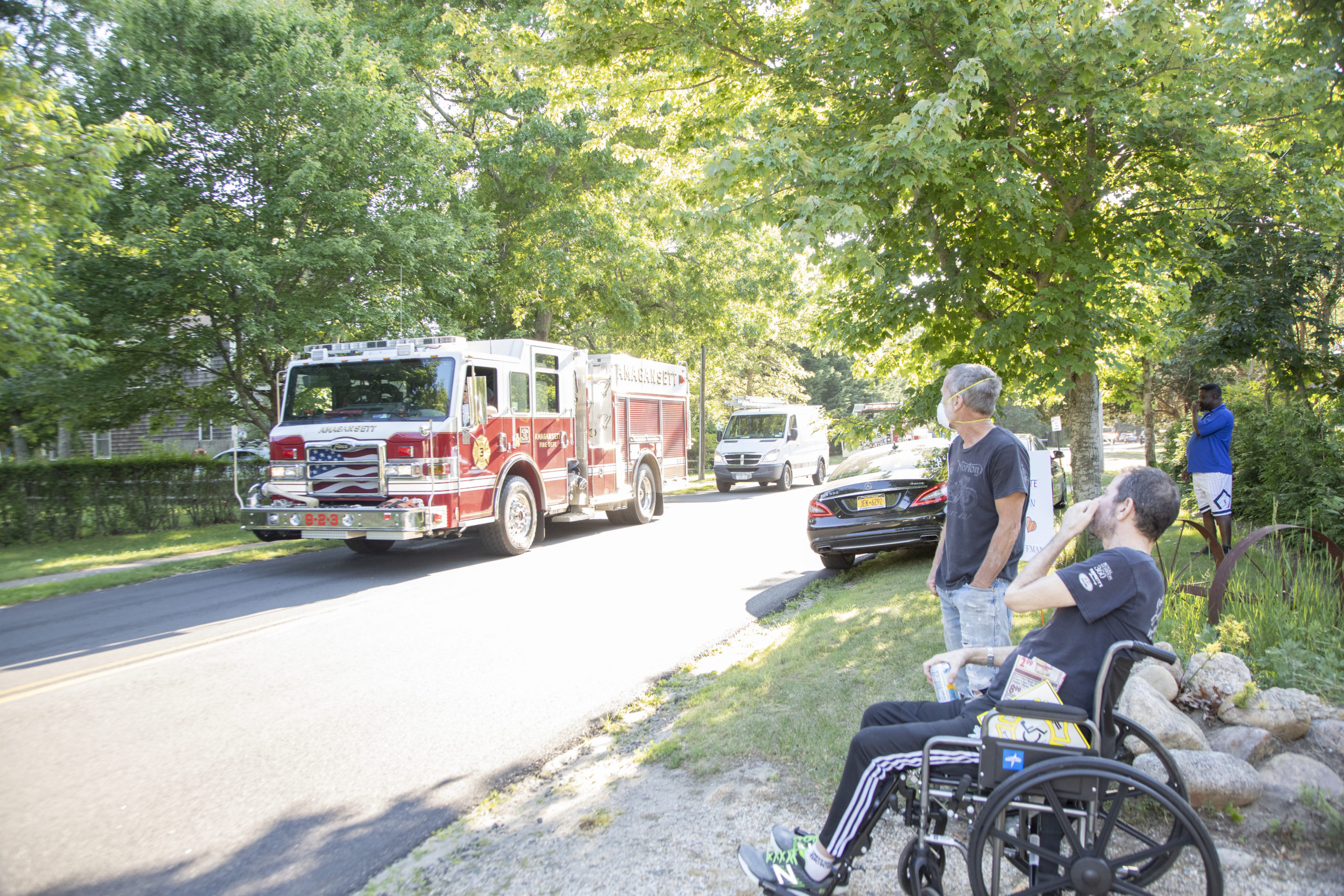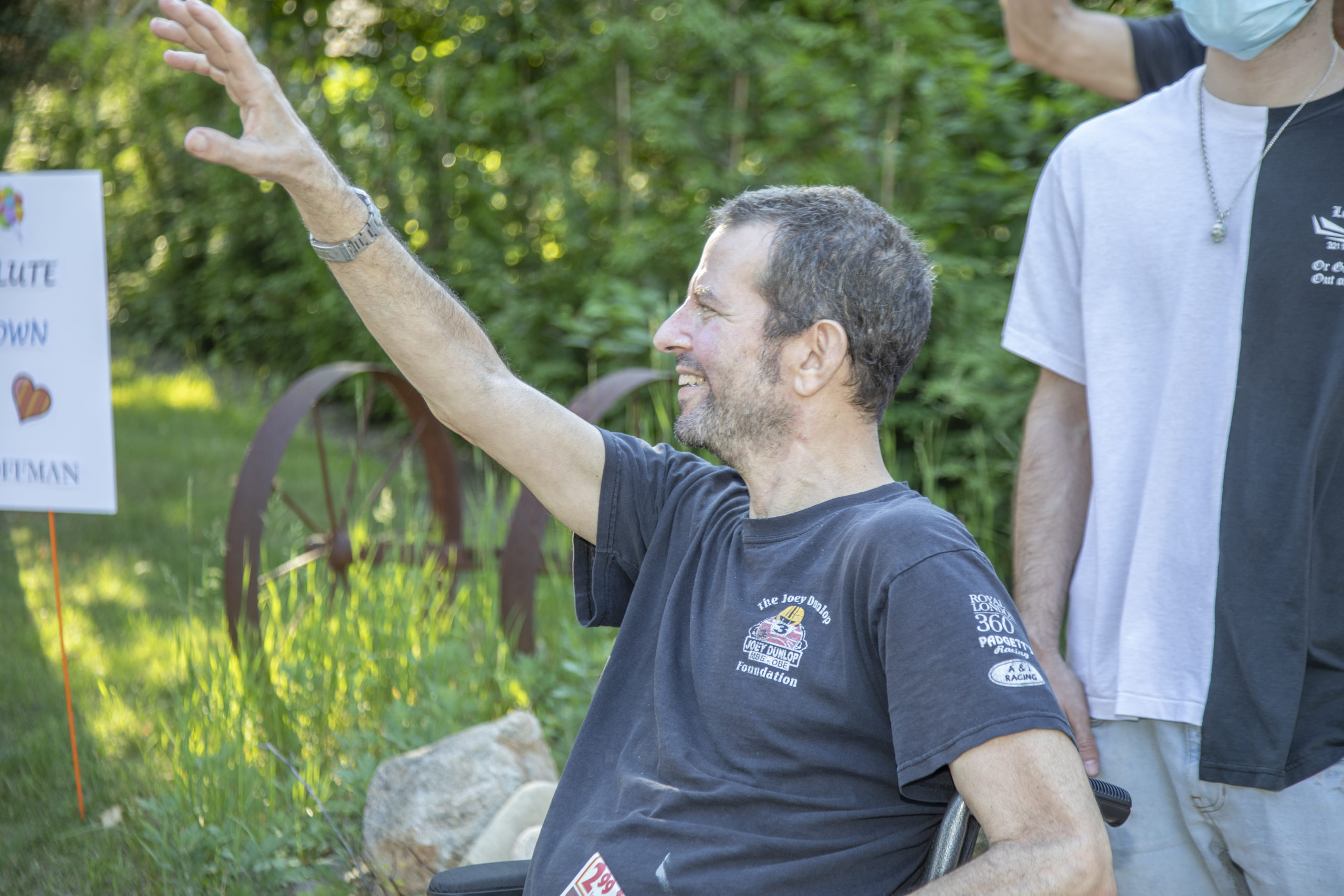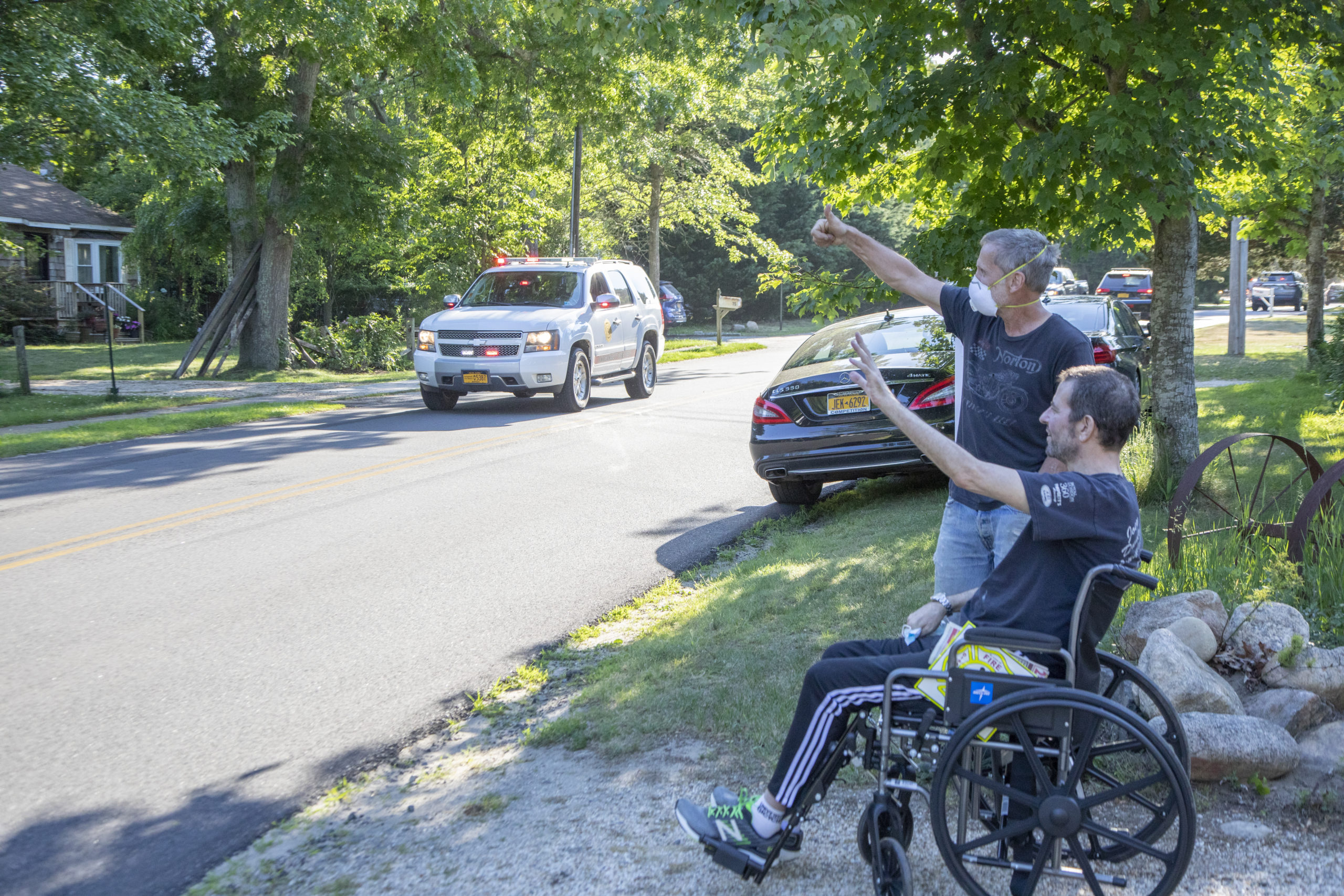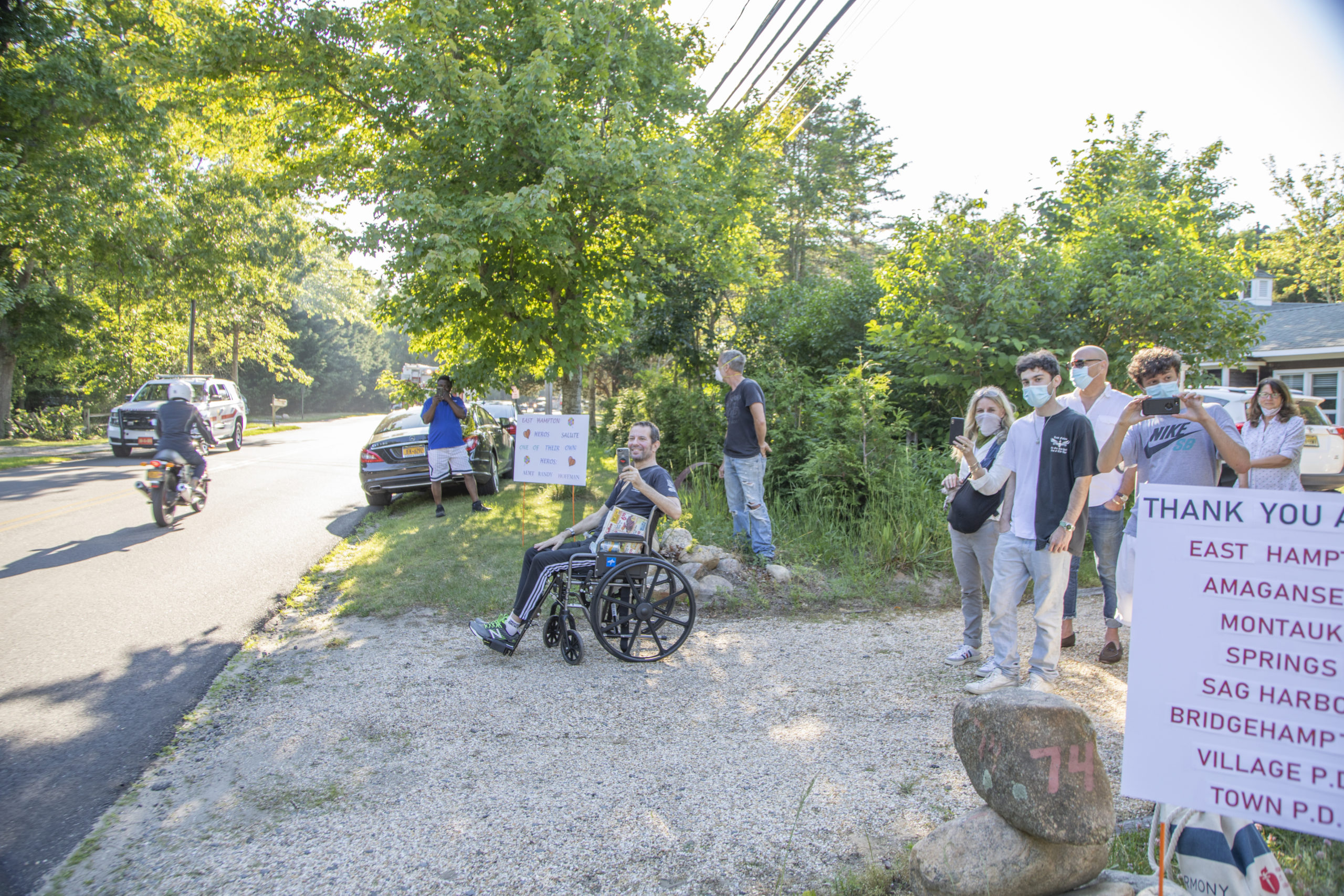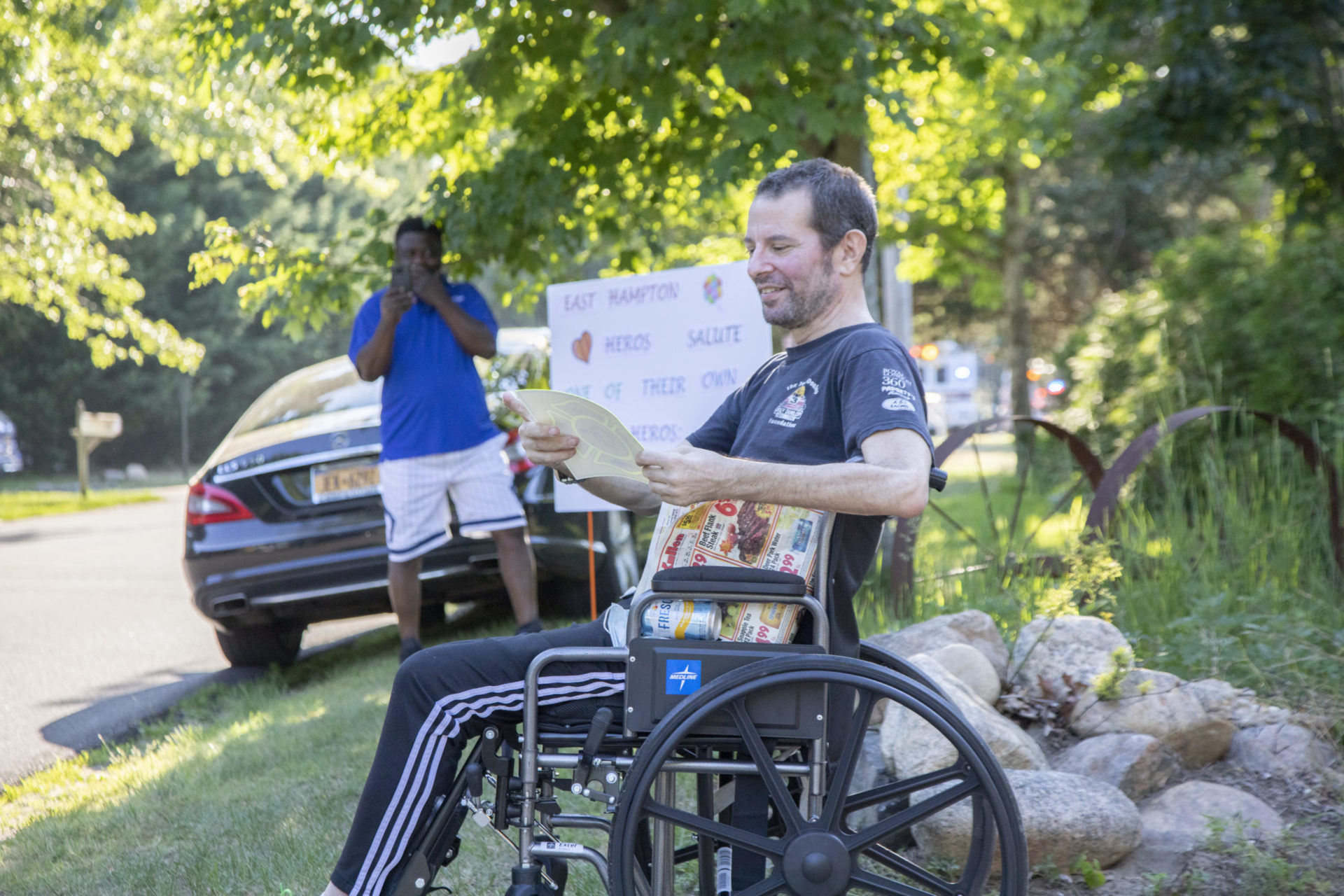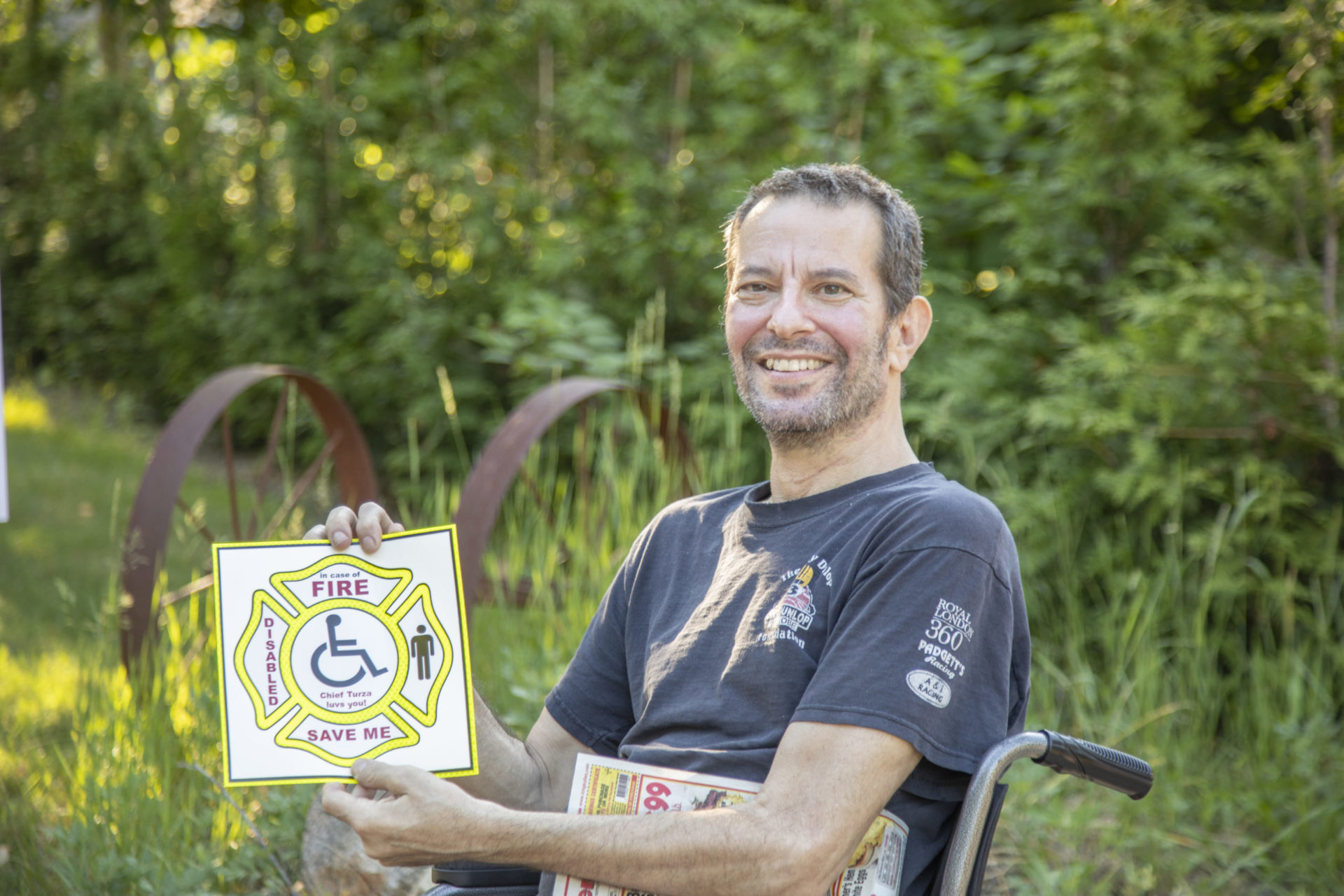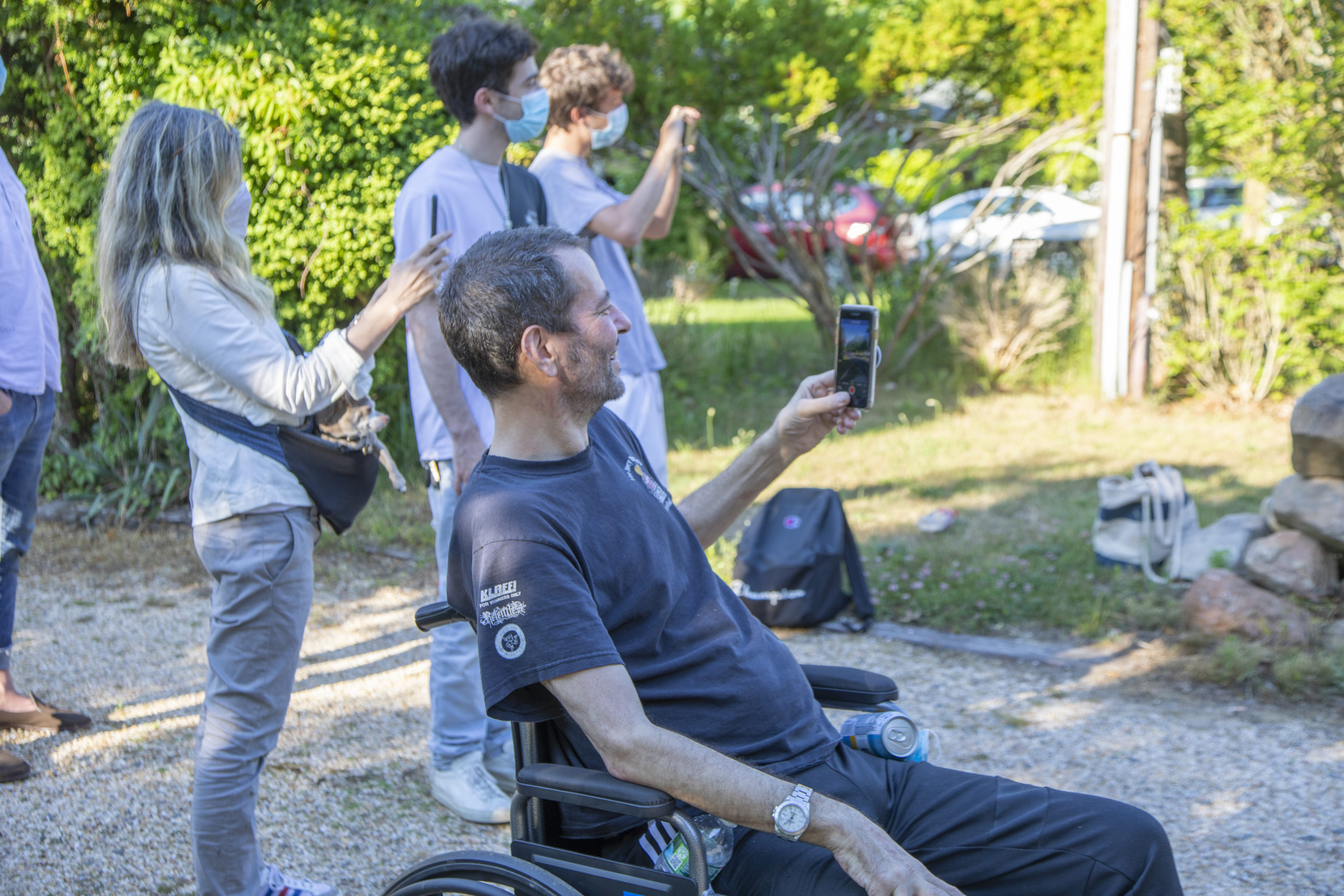EMS Provider Returns to East Hampton Six Months After Surgery Left Him Paralyzed
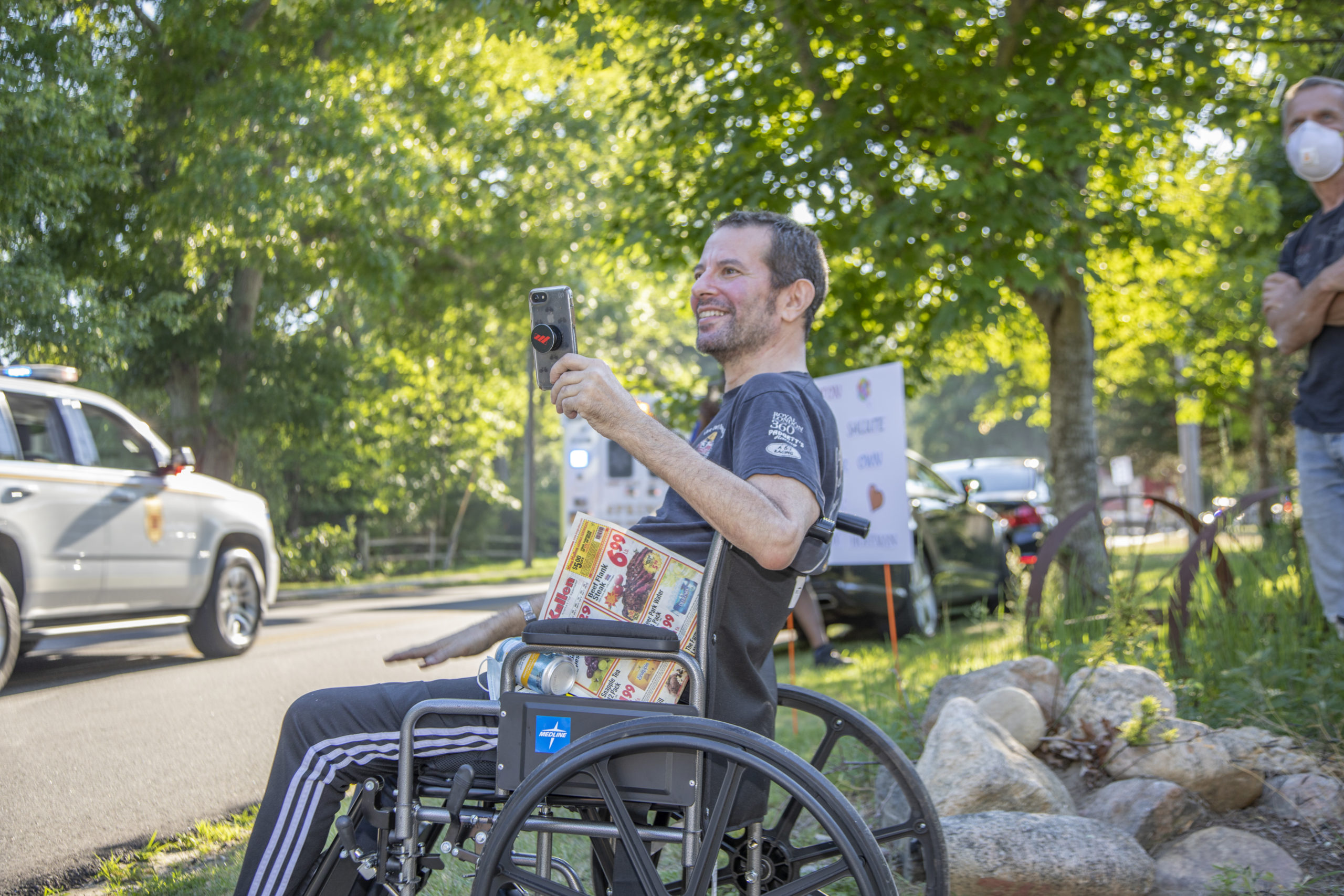
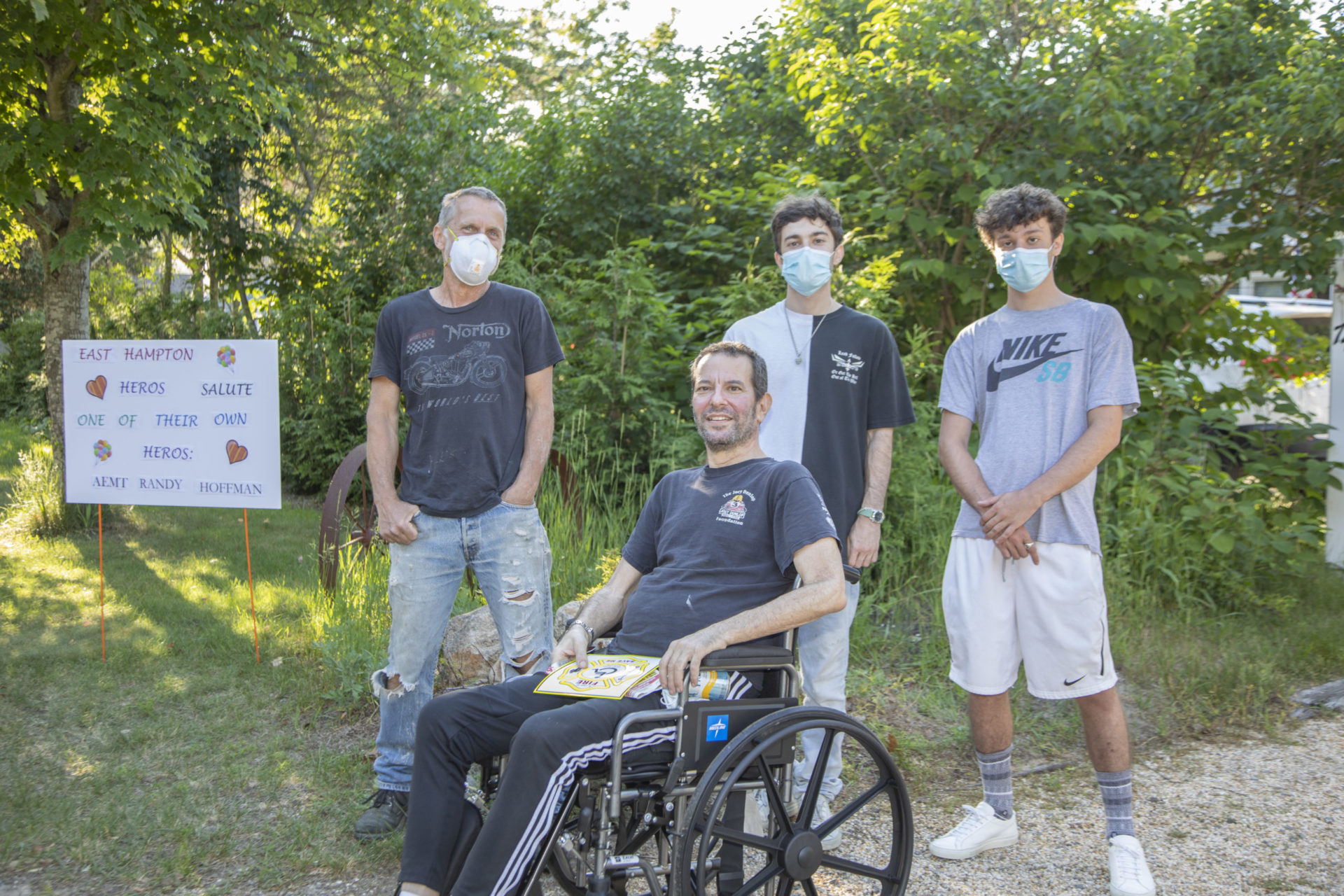
Last week, six months after a surgery that left him paralyzed from the neck down, Randy Hoffman walked out of a rehabilitation center and returned to East Hampton.
With his hands on a walker and masked nurses surrounding him, one of them told him he could not walk over the threshold because it was metal. “I said, ‘We’ll see.’ ” Sure enough, he crossed that threshold himself, the hard-fought victory seen in his smile like the sunlight on his face.
Back on December 5, 2019, Hoffman, well-known throughout the emergency medical service system on the East End, underwent what is considered at the Hospital for Special Surgery in New York City to be a routine spinal procedure, an anterior cervical discectomy and fusion to correct nerve damage in his arm.
“It was supposed to be a two-hour surgery—out the next day. They do hundreds of them a week,” Hoffman explained. His mother and his sister flew in from Colorado to be with him, but he felt it was “no big deal.”
A 12-year advanced life-support provider, Hoffman knew something was wrong when he woke up from the procedure and he was still intubated. He recalled how his hands were crossed on his chest and he was told to move them. All he could wiggle was one finger.
MRIs showed there was bleeding around his spinal cord. Hoffman ended up undergoing more surgeries—in all, four surgeries in 30 hours.
When he fully came to, the doctor told him he was in spinal shock and essentially paralyzed from the neck down, but he was told, “ ‘I expect you’ll fully recover, but it’s going to take a lot of time because the compression has to go down.’ ”
By the way, Hoffman noted, the pinched nerve never got fixed.
To be expected, his memory of those first few days is hazy, but he remembers vividly his dreams, right out of “Alice in Wonderland,” he said. “Machinery, like metalworking machinery, were developing faces and talking to me.” It was from the Dilaudid, a morphine-derivative that produces a high similar to heroin distorting the very machines he works with in his East Hampton shop. “It was so realistic and so deep and so real.”
In the coming weeks, Hoffman was transferred to Mount Sinai, acute rehab facility. He regained the use of his hands. As the nerve endings returned in his hands, it was so painful he had to ice them. There was progress, albeit he felt it was slow. Then he read something that referred to him as a quadriplegic. “That’s when I really got very upset, because then I was like, shit.”
There was a program on his floor at Mount Sinai where patients would get together, and transitioning into society in a wheelchair was discussed. He attended once and quickly left. When he was asked to come back, he said, “I’m not going to be in a wheelchair.”
Hoffman, 59, had been in great shape. He cycled 20 to 30 miles every day before the surgery. A self-employed custom cabinetmaker, he also built, restored and raced classic motorcycles, all while running ambulance calls. He lost 38 pounds while his muscles atrophied.
While he regained feeling and later mobility in all four of his limbs, the East End community sprang into action, raising more than $100,000 for him between online fundraisers and spaghetti dinners at local firehouses. He has ridden on every ambulance, at one time or another, between Montauk and Southampton, and his friends in EMS, as well as people he has cared for, rallied to ensure his regular bills and whatever medical costs not paid for by insurance would be covered.
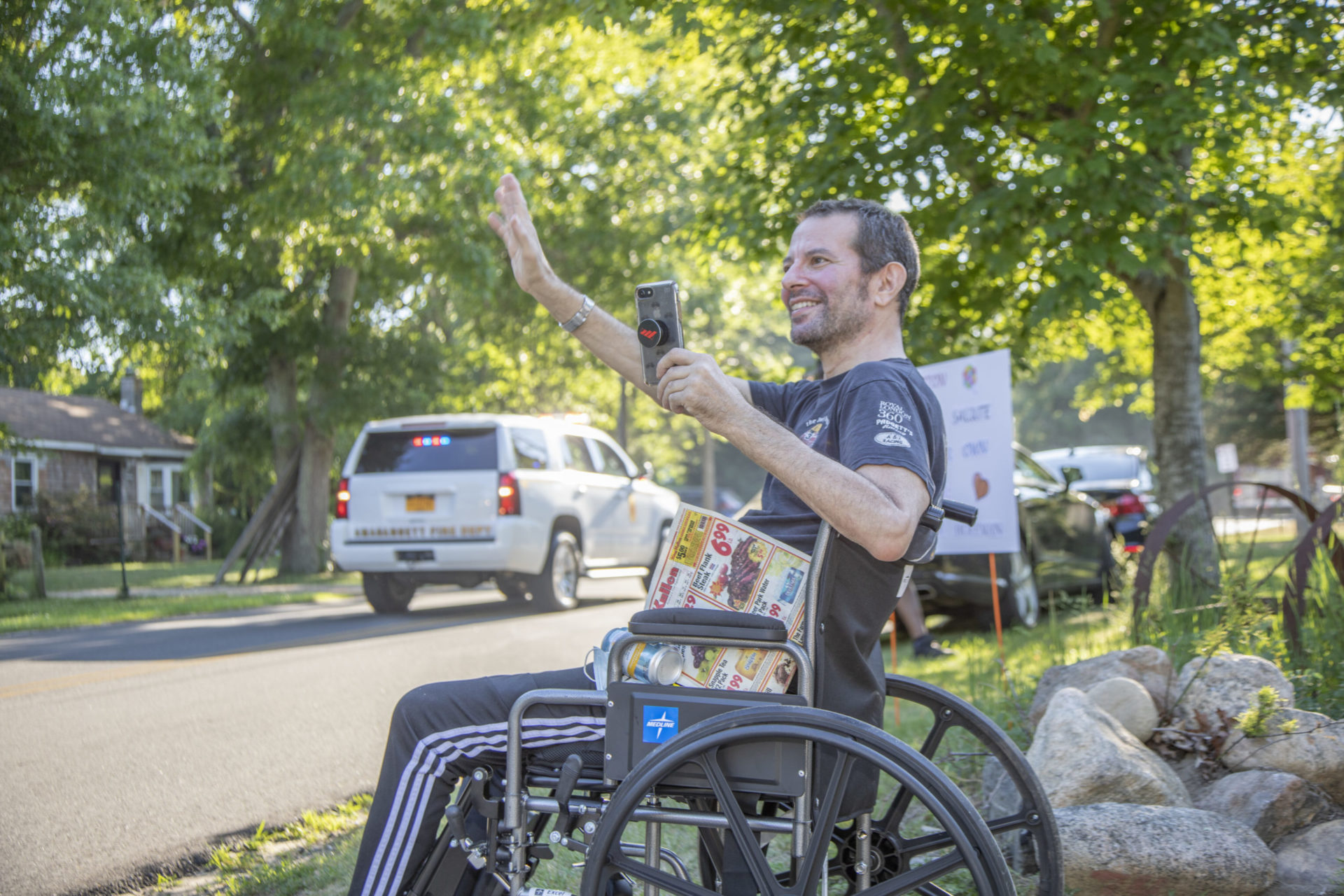
Over the winter he was transferred to San Simeon on the Sound in Greenport, a sub-acute facility, which while mainly known as a nursing home has the kind of physical therapy he required. Plus, he longed to be closer to home, even though he had a steady stream of visitors in the city.
About a month after he arrived back on the East End, the novel coronavirus would hit New York. San Simeon very quickly closed its doors to visitors, successfully keeping COVID-19 out of the facility. For nearly three months, Hoffman had to go without visitors, and his focus was solely on rehabilitation.
He surprised even his caregivers with his progress. Three months ago, his primary physical therapist asked him what his goals were. “I said I wanted to walk out the front doors with a walker, and she didn’t say anything. And then two months ago, she said, ‘We really need to sit down and talk about realistic goals.’ And I said, ‘I told you what my goals were,’ and she said, ‘No, no.’
“That’s when I got really depressed, because she said, ‘You’re not going to walk out of here with a walker, or there’s a good chance you won’t,’ he said. It was a brutal blow, but the reality was, he said, it did not look like it was going to happen.
Hoffman considers himself a generally positive person—sarcastic, he admits, but someone who looked at the bright side of things. The experience brought him to depths he had never known before. Yes, even suicidal thoughts, he freely admitted.
There were times he lashed out, where he recalled yelling out loud, “It can’t end this way.” Other days he just cried. “I mean just days, especially weekends were just difficult, I didn’t have physical therapy on Sundays. I would just cry and cry and cry,” he said. Finally, he agreed to go on Paxil, an antidepressant.
How did he pull himself out of it?
“I took a step between the parallel bars,” he said with a smile. “That did it.”
During a P.T. session, he managed that first step while standing between parallel bars. A few days later, he took a couple more steps. Soon he was able to walk across the room with the walker, turn around, sit down and stand up again.
“Now that’s functional walking,” his primary physical therapist told him.
He hopes to be walking more in the next few months, and his new goal is to go back to racing in February.
On Friday evening, just days after returning to East Hampton, his friends in the EMS and fire service paid him a visit—but not because he was in need of assistance. The East Hampton Village Ambulance Association, of which he is a member, organized a drive-by homecoming parade. Ambulances, fire trucks, first responder vehicles and EMTs waving signs passed by one by one to welcome him home. There was that smile once again, as he waved and blew kisses.
Now just one question remains: When will he back on the ambulance, helping others?
Soon, he said.
